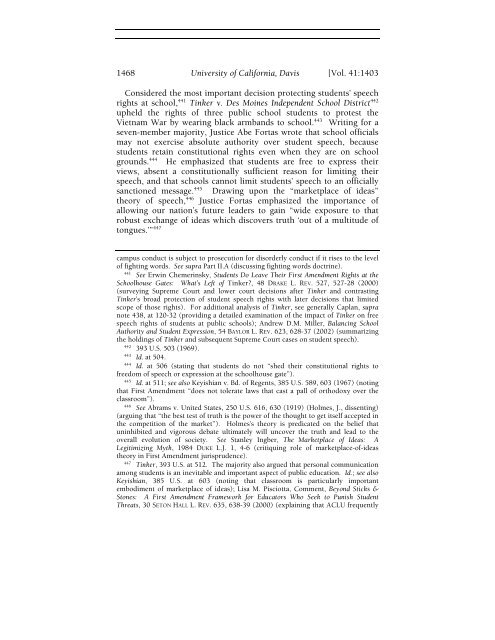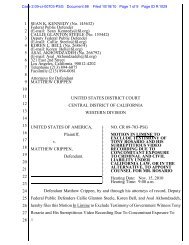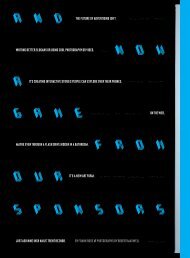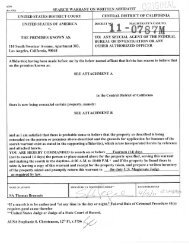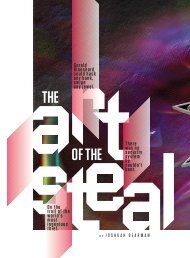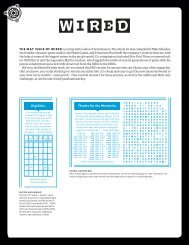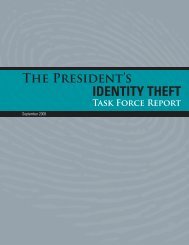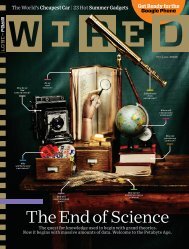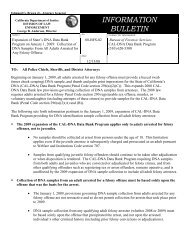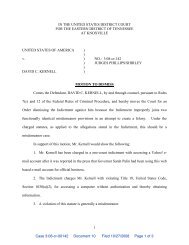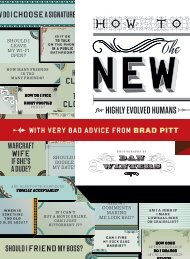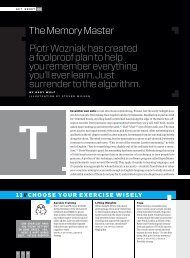Digitus Impudicus: The Middle Finger and the Law - Wired
Digitus Impudicus: The Middle Finger and the Law - Wired
Digitus Impudicus: The Middle Finger and the Law - Wired
Create successful ePaper yourself
Turn your PDF publications into a flip-book with our unique Google optimized e-Paper software.
1468 University of California, Davis [Vol. 41:1403<br />
Considered <strong>the</strong> most important decision protecting students’ speech<br />
rights at school, 441 Tinker v. Des Moines Independent School District 442<br />
upheld <strong>the</strong> rights of three public school students to protest <strong>the</strong><br />
Vietnam War by wearing black armb<strong>and</strong>s to school. 443 Writing for a<br />
seven-member majority, Justice Abe Fortas wrote that school officials<br />
may not exercise absolute authority over student speech, because<br />
students retain constitutional rights even when <strong>the</strong>y are on school<br />
grounds. 444 He emphasized that students are free to express <strong>the</strong>ir<br />
views, absent a constitutionally sufficient reason for limiting <strong>the</strong>ir<br />
speech, <strong>and</strong> that schools cannot limit students’ speech to an officially<br />
sanctioned message. 445 Drawing upon <strong>the</strong> “marketplace of ideas”<br />
<strong>the</strong>ory of speech, 446 Justice Fortas emphasized <strong>the</strong> importance of<br />
allowing our nation’s future leaders to gain “wide exposure to that<br />
robust exchange of ideas which discovers truth ‘out of a multitude of<br />
tongues.’” 447<br />
campus conduct is subject to prosecution for disorderly conduct if it rises to <strong>the</strong> level<br />
of fighting words. See supra Part II.A (discussing fighting words doctrine).<br />
441 See Erwin Chemerinsky, Students Do Leave <strong>The</strong>ir First Amendment Rights at <strong>the</strong><br />
Schoolhouse Gates: What’s Left of Tinker?, 48 DRAKE L. REV. 527, 527-28 (2000)<br />
(surveying Supreme Court <strong>and</strong> lower court decisions after Tinker <strong>and</strong> contrasting<br />
Tinker’s broad protection of student speech rights with later decisions that limited<br />
scope of those rights). For additional analysis of Tinker, see generally Caplan, supra<br />
note 438, at 120-32 (providing a detailed examination of <strong>the</strong> impact of Tinker on free<br />
speech rights of students at public schools); Andrew D.M. Miller, Balancing School<br />
Authority <strong>and</strong> Student Expression, 54 BAYLOR L. REV. 623, 628-37 (2002) (summarizing<br />
<strong>the</strong> holdings of Tinker <strong>and</strong> subsequent Supreme Court cases on student speech).<br />
442 393 U.S. 503 (1969).<br />
443 Id. at 504.<br />
444 Id. at 506 (stating that students do not “shed <strong>the</strong>ir constitutional rights to<br />
freedom of speech or expression at <strong>the</strong> schoolhouse gate”).<br />
445 Id. at 511; see also Keyishian v. Bd. of Regents, 385 U.S. 589, 603 (1967) (noting<br />
that First Amendment “does not tolerate laws that cast a pall of orthodoxy over <strong>the</strong><br />
classroom”).<br />
446 See Abrams v. United States, 250 U.S. 616, 630 (1919) (Holmes, J., dissenting)<br />
(arguing that “<strong>the</strong> best test of truth is <strong>the</strong> power of <strong>the</strong> thought to get itself accepted in<br />
<strong>the</strong> competition of <strong>the</strong> market”). Holmes’s <strong>the</strong>ory is predicated on <strong>the</strong> belief that<br />
uninhibited <strong>and</strong> vigorous debate ultimately will uncover <strong>the</strong> truth <strong>and</strong> lead to <strong>the</strong><br />
overall evolution of society. See Stanley Ingber, <strong>The</strong> Marketplace of Ideas: A<br />
Legitimizing Myth, 1984 DUKE L.J. 1, 4-6 (critiquing role of marketplace-of-ideas<br />
<strong>the</strong>ory in First Amendment jurisprudence).<br />
447 Tinker, 393 U.S. at 512. <strong>The</strong> majority also argued that personal communication<br />
among students is an inevitable <strong>and</strong> important aspect of public education. Id.; see also<br />
Keyishian, 385 U.S. at 603 (noting that classroom is particularly important<br />
embodiment of marketplace of ideas); Lisa M. Pisciotta, Comment, Beyond Sticks &<br />
Stones: A First Amendment Framework for Educators Who Seek to Punish Student<br />
Threats, 30 SETON HALL L. REV. 635, 638-39 (2000) (explaining that ACLU frequently


